In a paella, no liquid remains after cooking, the rice is then “seco”. “Meloso” means that the rice has remained slightly moister. If there is more liquid surrounding the rice in a dish, it is called “caldoso”. Each of these results requires a different ratio of rice to liquid and a different cooking time.
In any case, you need the right rice for a Spanish rice dish, and of course it is grown in Spain. The noblest rice variety suitable for such dishes is Arroz Bomba, which we also recommend using.
Other types of rice, such as long-grain rice, are completely unsuitable and such a dish cannot succeed with them at all. Do not even try it. And the use of Italian rice varieties such as Arborio must also be discouraged; you can make an excellent risotto with it, but not a Spanish rice dish.
For our special recipe today, in Spain you start with Ñora (pronounced “Niora”). This is a small, spherical pepper crop grown in the province of Murcia. The ripe Ñora are dried in the sun and develop a deep, wine-red colour and a unique flavour.
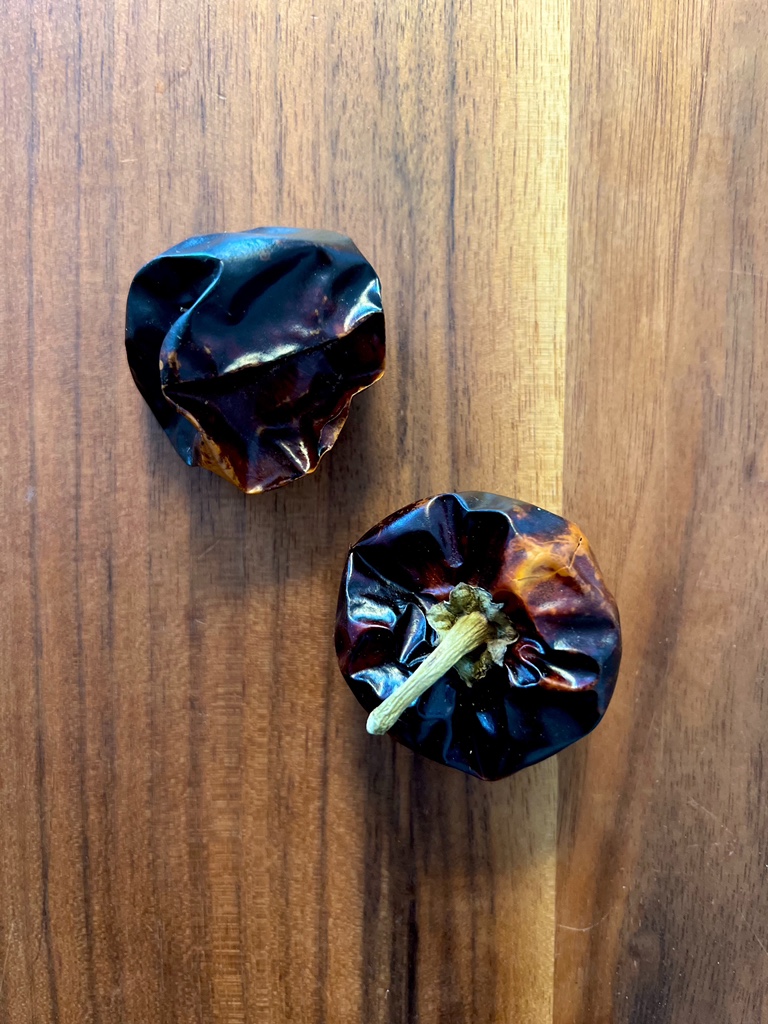
Outside Spain, you can find dried Ñora at specialised traders and if you are interested in Spanish cuisine, you should buy some packets, the dried fruits can easily be kept for a year and are not expensive. We always take them with us from Spain, where you can buy them in almost every supermarket.
If you don’t have Ñora and want to cook today’s dish, you can alternatively season it with Pimentón de la vera. This is a smoked paprika powder from the western Spanish province of Extremadura, which is now available almost everywhere and which we have also used in this recipe.
We rehydrate two Ñora for one hour in lukewarm water. They are so light that they float on the surface, but if you submerge them briefly at the beginning, they will soak up enough liquid on their own.
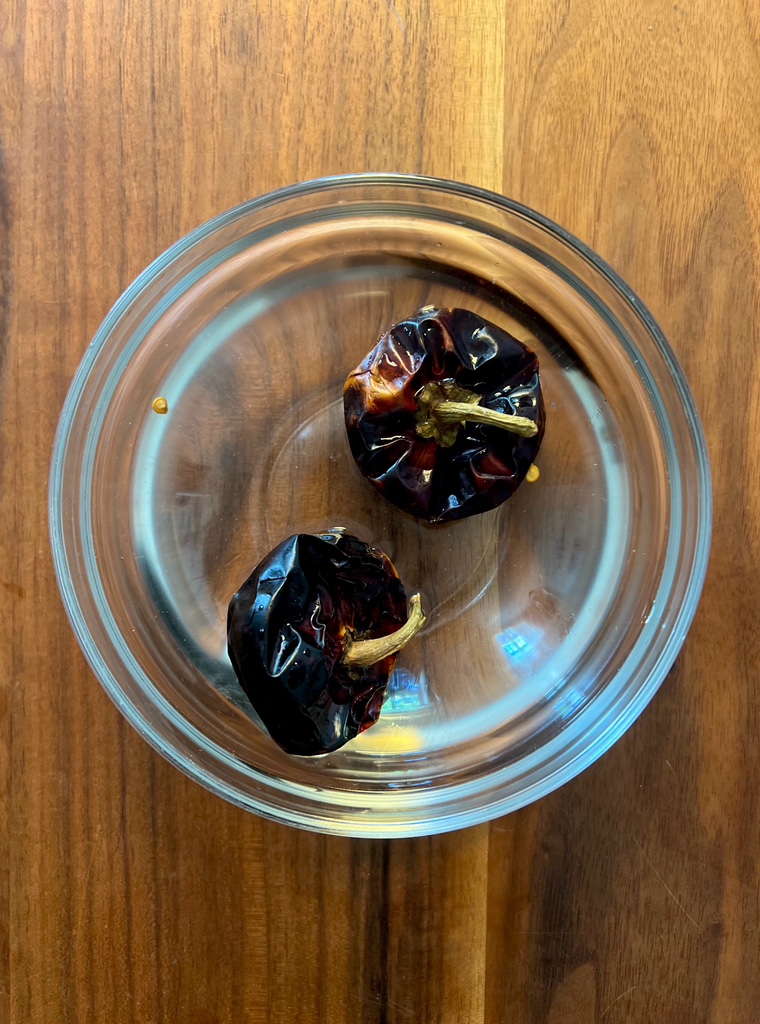
The soaked Ñora are squeezed and then opened. Now you can use the back of a knife to scrape the little but tremendously flavourful flesh from the peels.
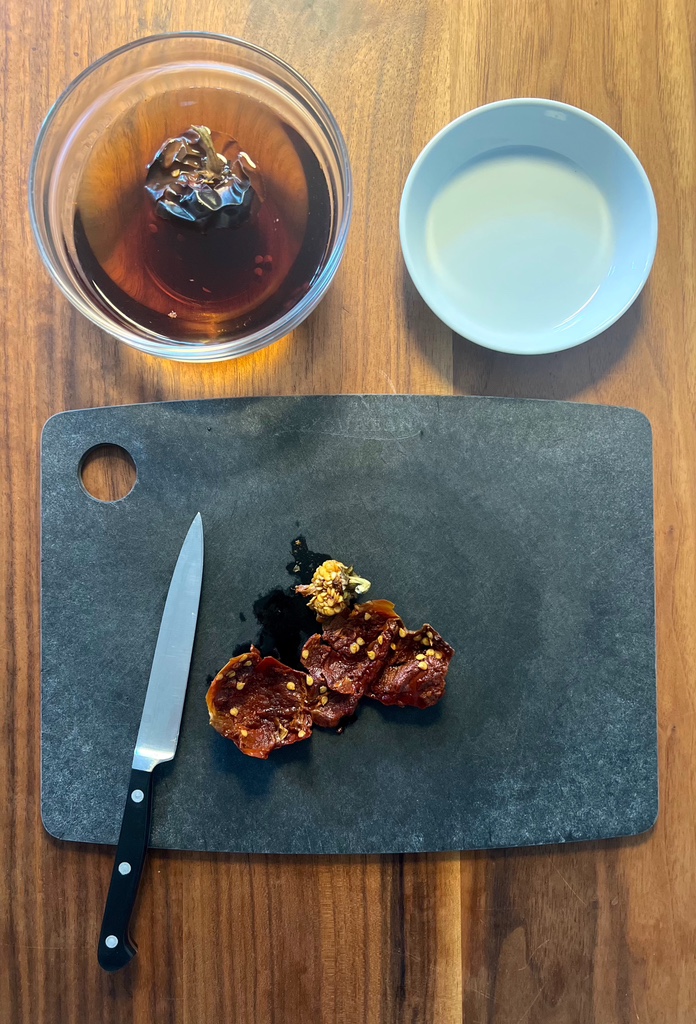
Only this pulp is used as a spice for our dish today.
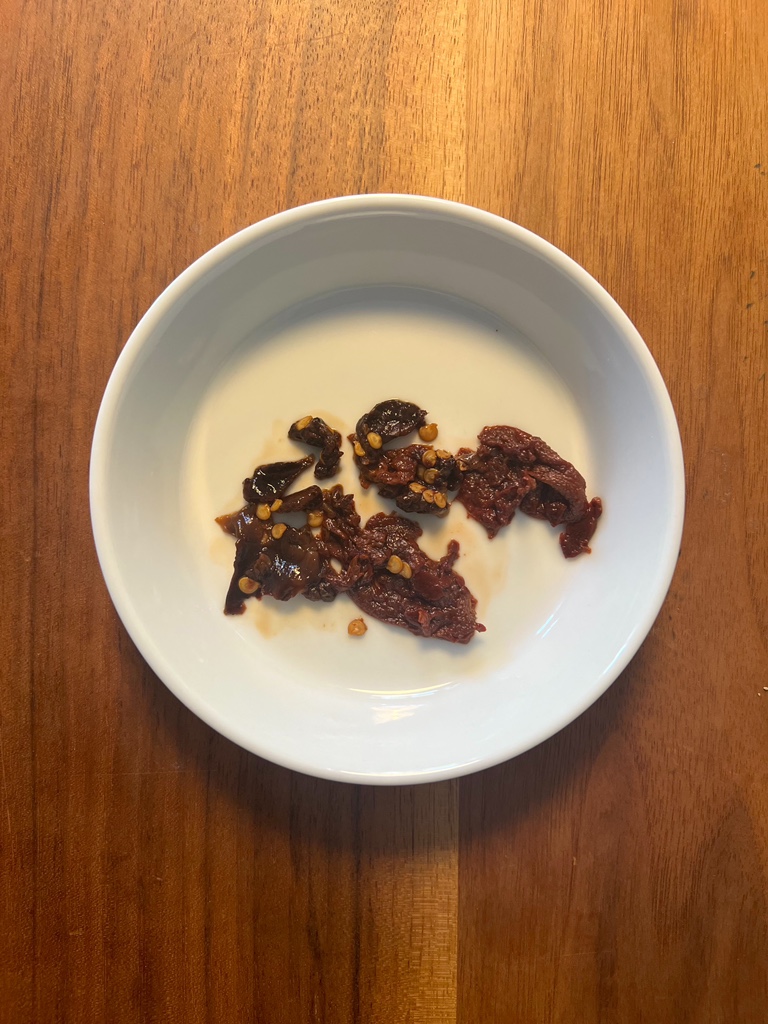
Tomatoes are cut in half and then passed over a grater on the cutting surface. This is a quick and easy way to create a fine mixture of pulp and juice, while leaving the skin behind, which we no longer have any use for.
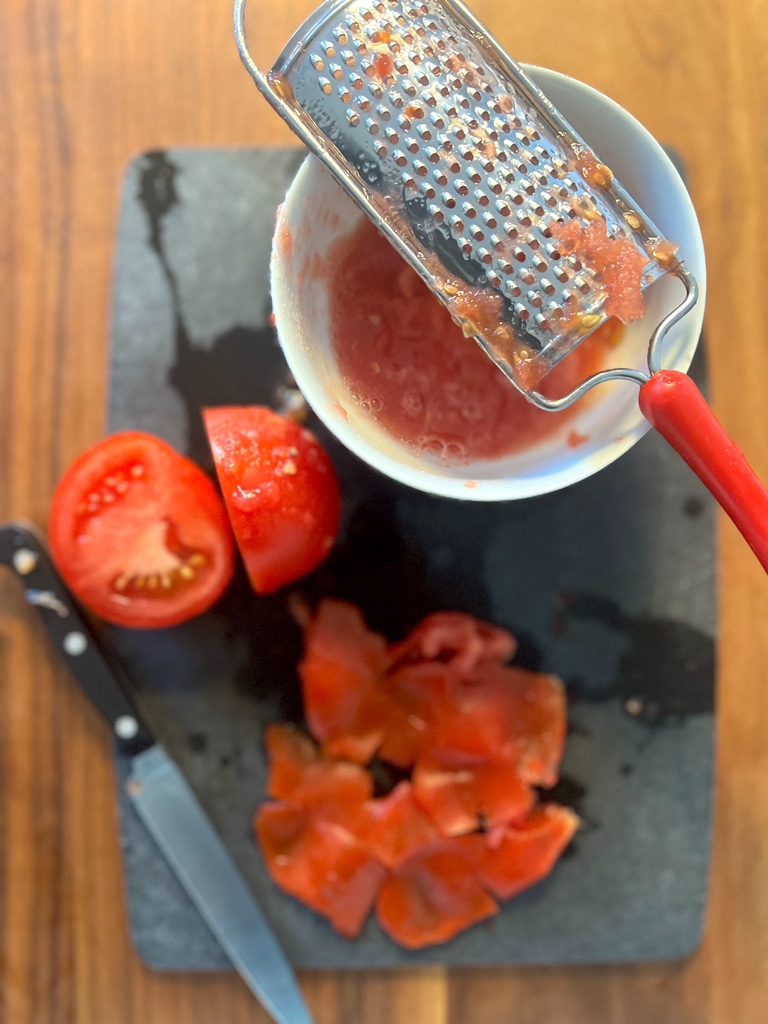
We dice onions and finely chop garlic. Peppers and tubes of sepia are also diced, in pieces of a pleasant size. We bought the sepia frozen just like the prawns, as there is no other way for such seafood to reach us fresh at our home.
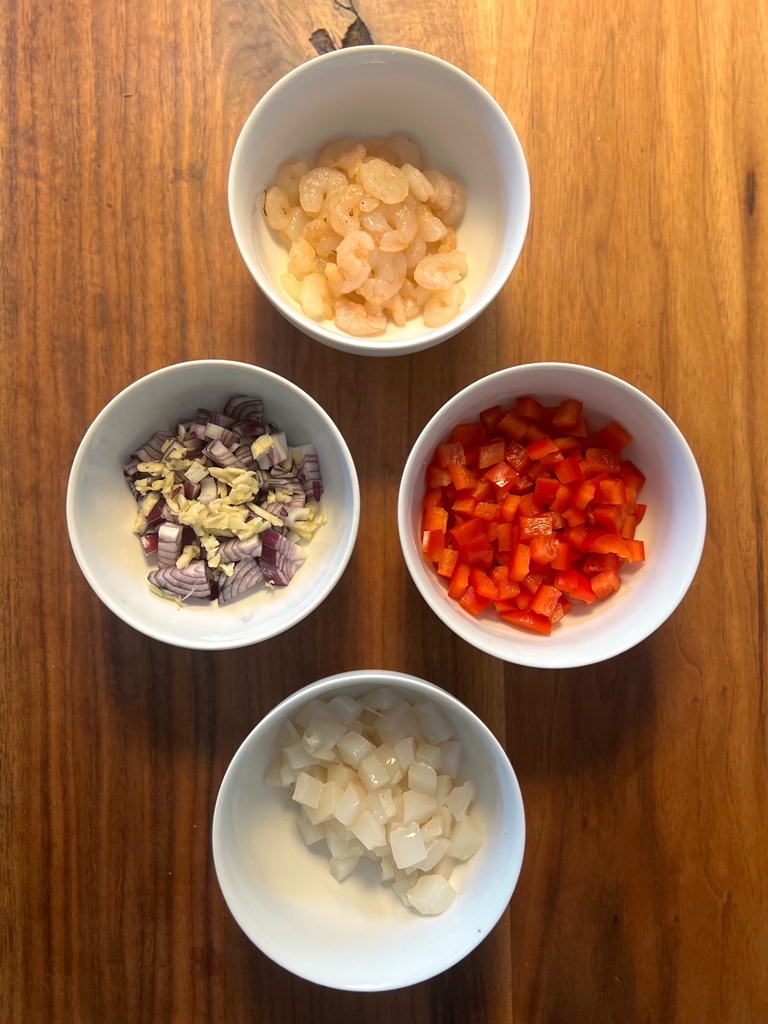
We sauté the shrimps in about 5 tablespoons of olive oil for about a minute over medium-high heat until they take on some colour and give off the typical scent of shellfish. Then we remove the shrimps from the pan and set them aside.
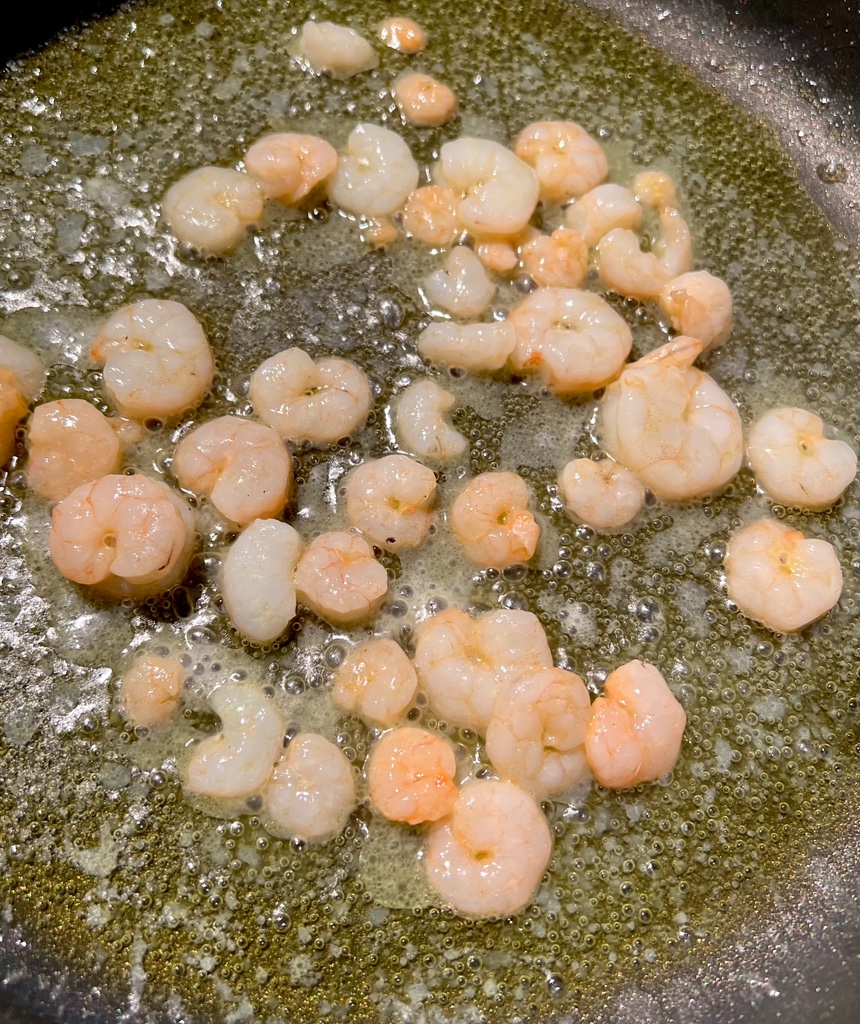
Next, and in the same oil, the sepia cubes are sautéed, also for about a minute.
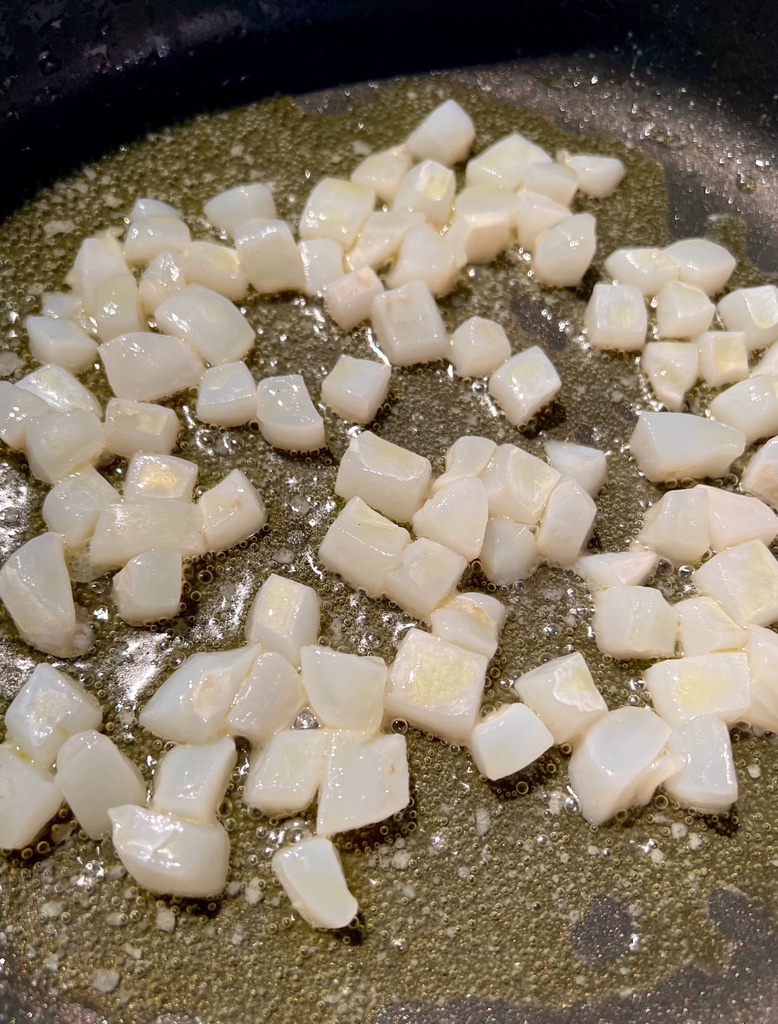
Bell pepper is added to this. For a more colourful dish, you can combine red and green types. Sweat the bell peppers for about two minutes.
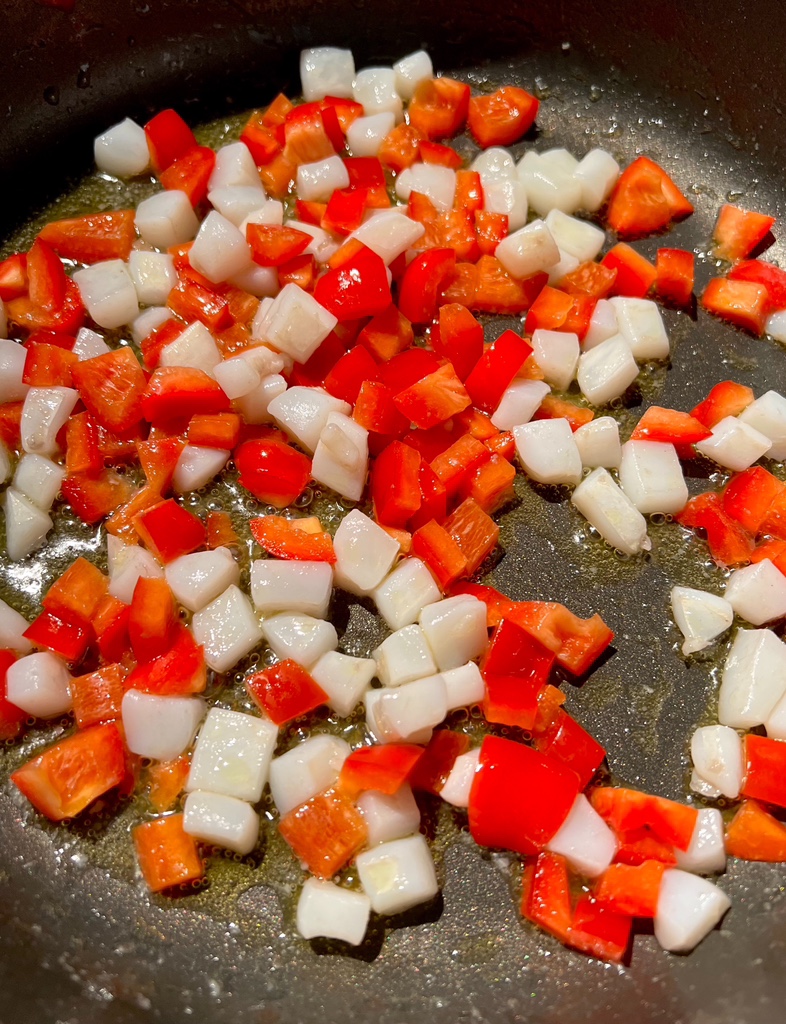
Then the onions and garlic are added and sautéed until translucent. This can take up to five minutes.
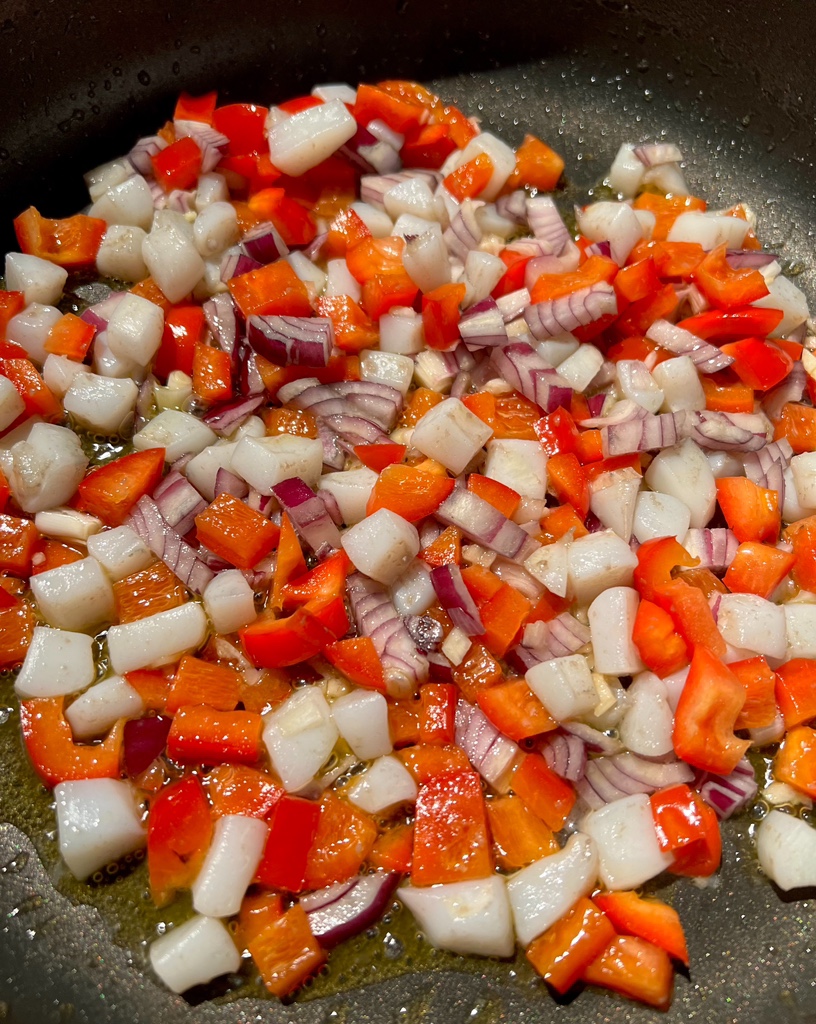
Now we add our grated tomatoes and the pulp of the Ñora.
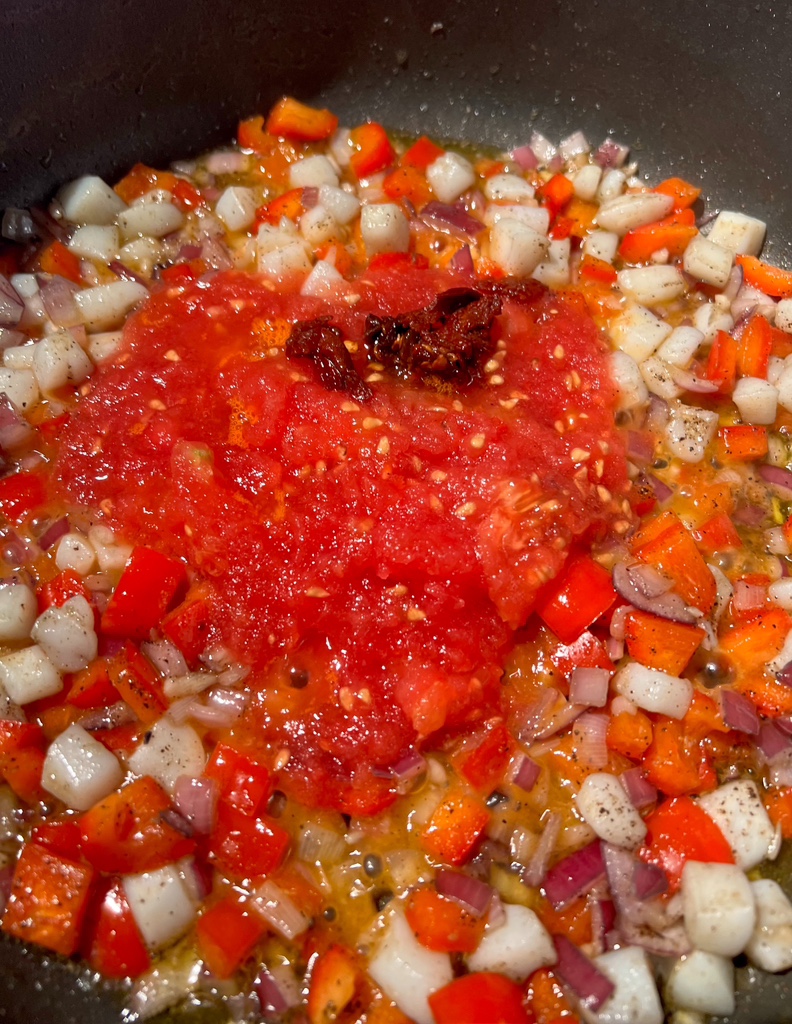
Everything is stirred together and gently seasoned with salt and pepper. Then we let this mixture simmer for about six to seven minutes until most of the liquid has evaporated. During all this time, the squid become softer and softer and release their flavour into the sauce.
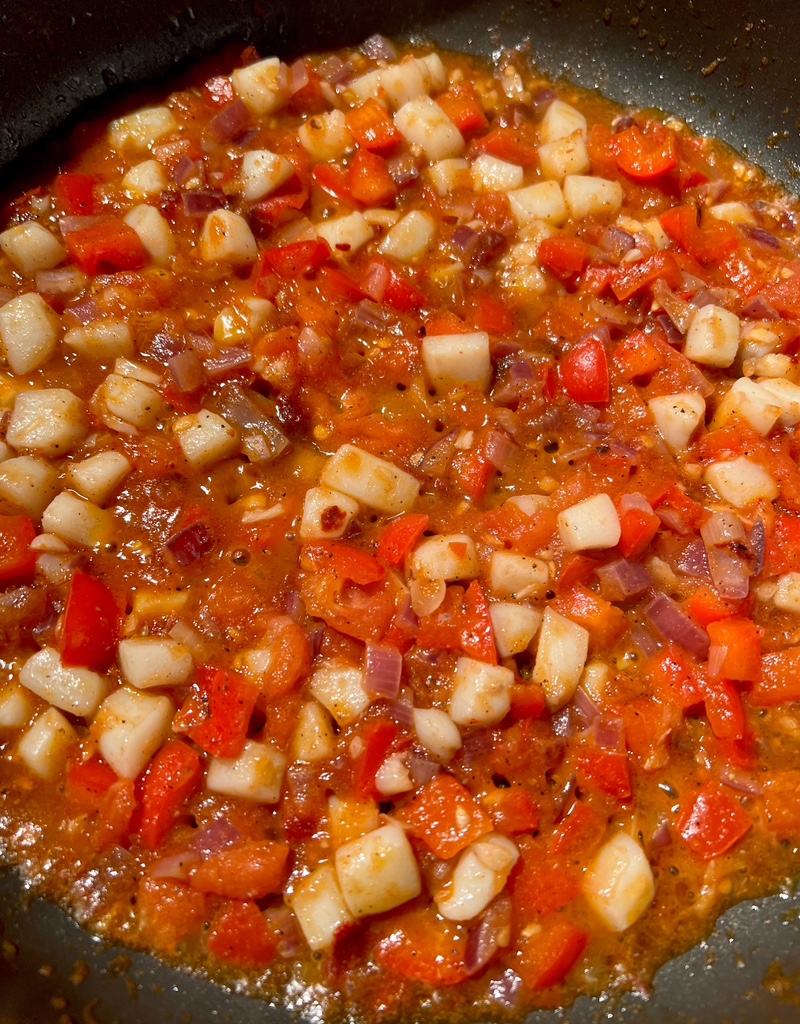
Now we also add the rice and saffron threads to the pan and mix everything thoroughly so that the rice is coated all over with sauce. Let the rice toast gently for another 3 minutes.
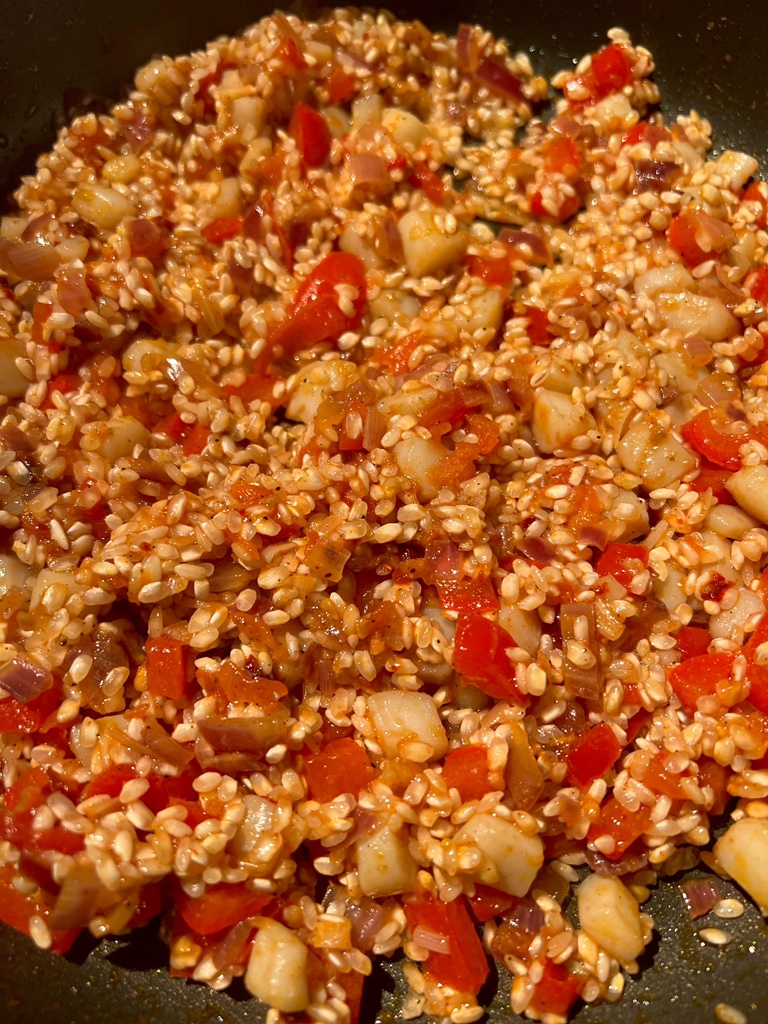
Then we pour on fish stock and increase the heat to bring everything to a boil. We also bought the fish stock. Unlike vegetable and meat stocks, we don’t pre-cook fish stocks, but make them ourselves if a dish provides us with enough fish carcasses or seafood shells – which is not the case today. However, there are very good fonds without undesirable additives to buy, especially from fishmongers who make them from the daily accruing cuttings.
We stir again and again so that nothing sticks to the bottom and cook the rice first for 8 minutes on a higher heat without a lid.
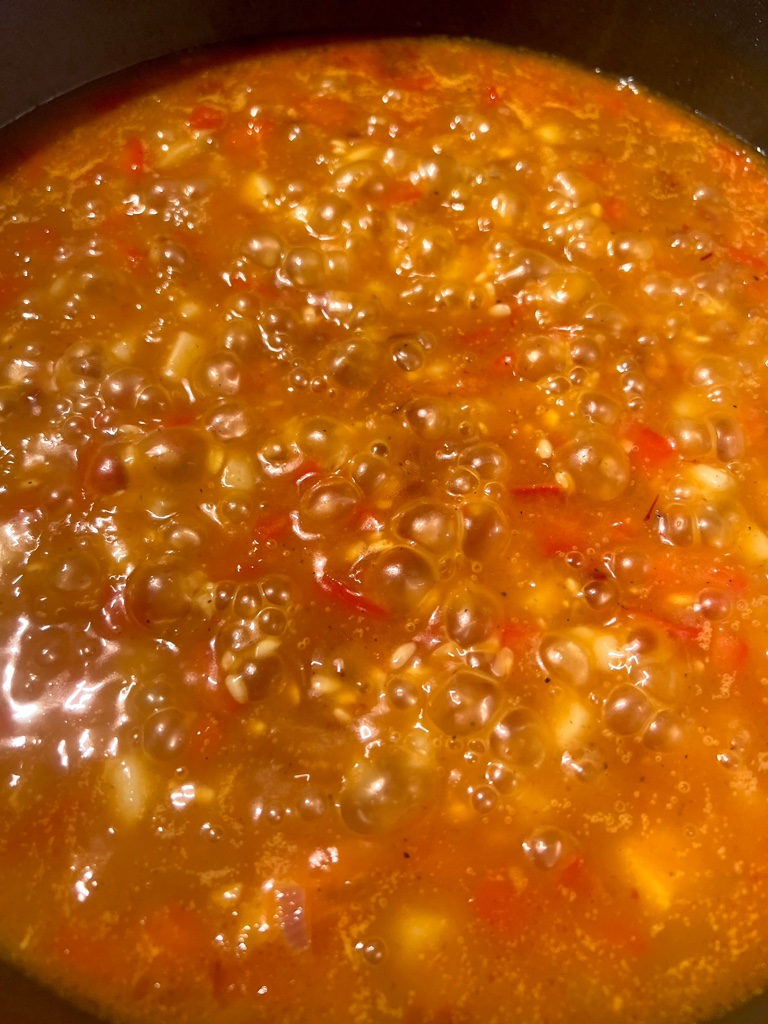
Then we reduce the heat (in our case to 3 out of 10) and put a lid on so that the dish only simmers gently. Even now, we have to stir gently every now and then. After another 8 minutes, we taste the rice, which should be cooked after a total of 16 to 18 minutes. Bomba rice becomes soft but retains its structure.
Now we add the prawns again and also a small handful of chopped parsley leaves. The prawns only need one or two minutes to heat up in the hot rice. Now we finally season to taste with salt.
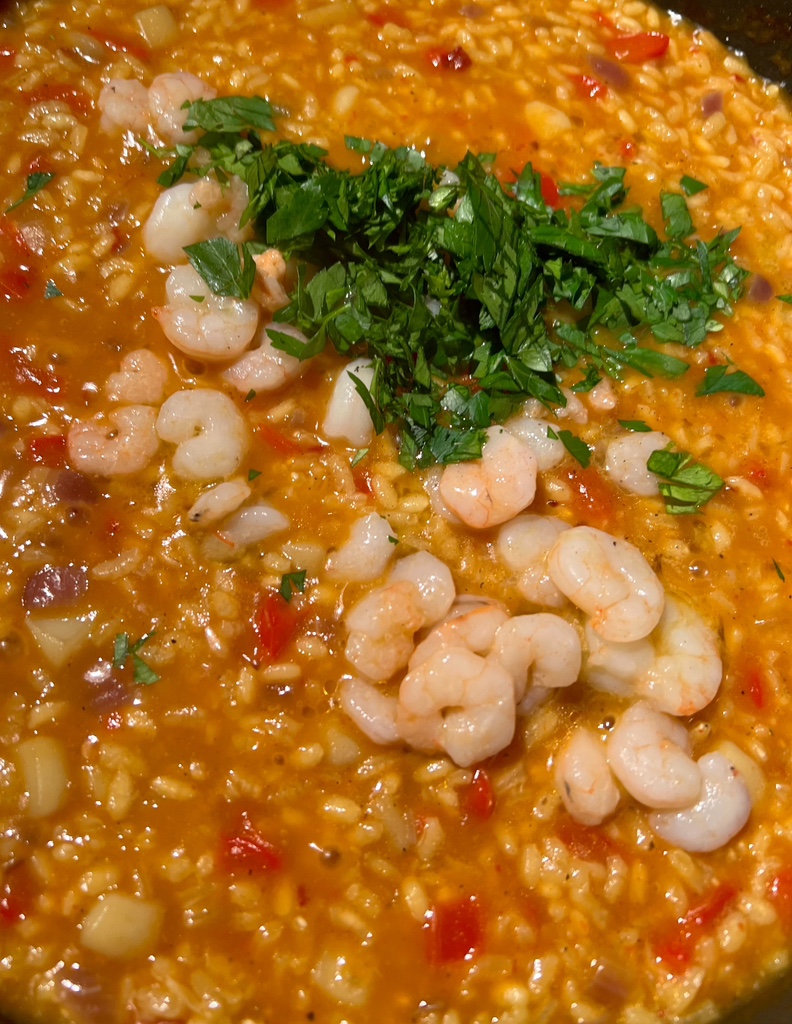
So in just 40 minutes of cooking, we have prepared a delicious rice dish that smells heavenly and tastes even better.
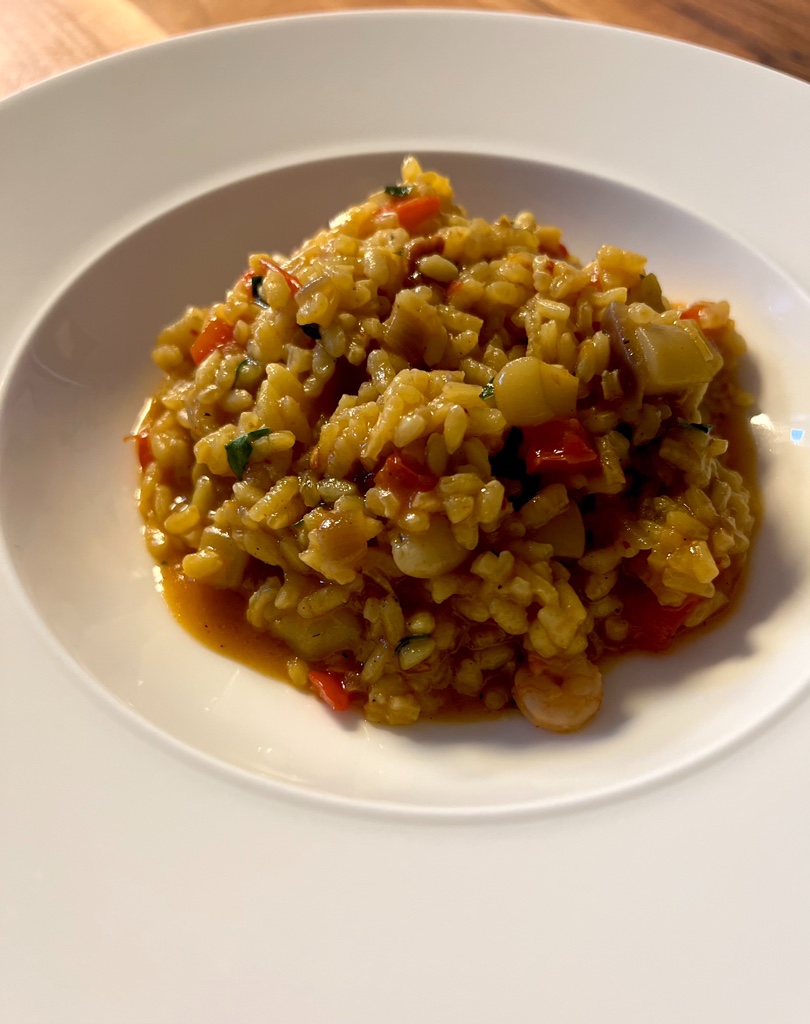
Enjoy.
And may the taste be with you.
Ingredients ( for 4 people):
2 Ñora (alternatively: Pimentón de la vera)
Some olive oil
2 onions
3 – 4 cloves of garlic
2 large tomatoes or 4 smaller ones
Half a red and half a green pepper
200 g prawns
200 g squid tubes
400 g bomba rice
Approx. 25 threads saffron
1.5 litres fish stock
Salt and pepper
Some parsley
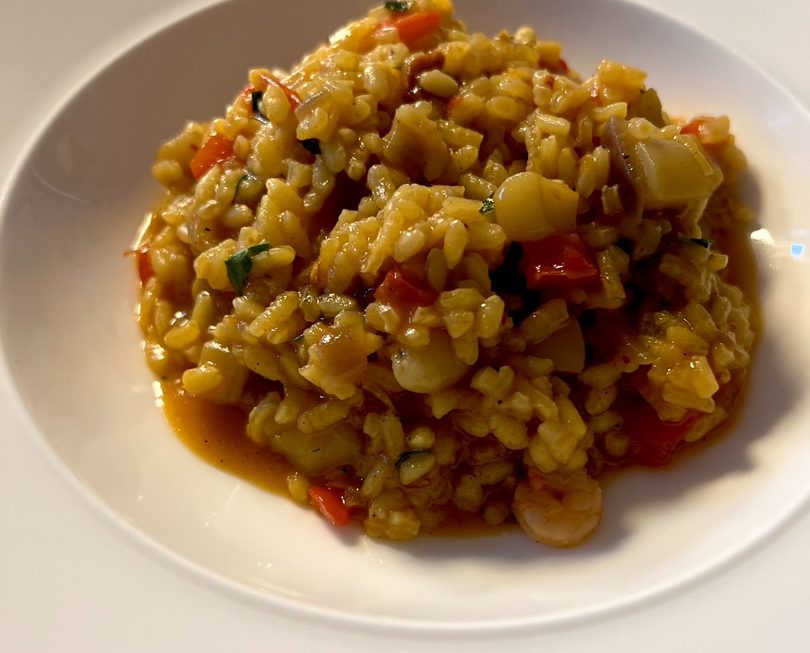
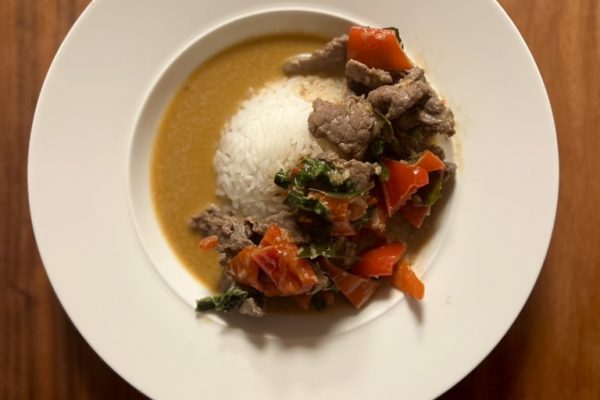
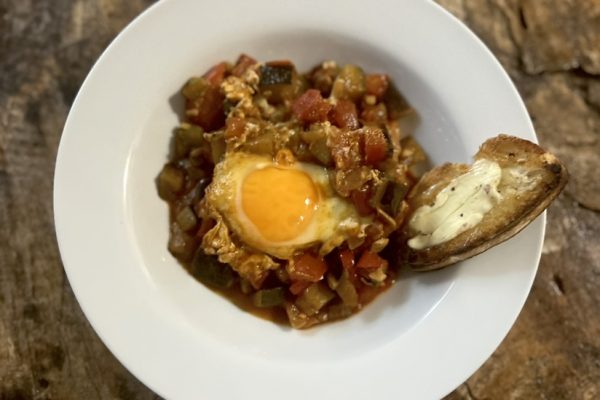

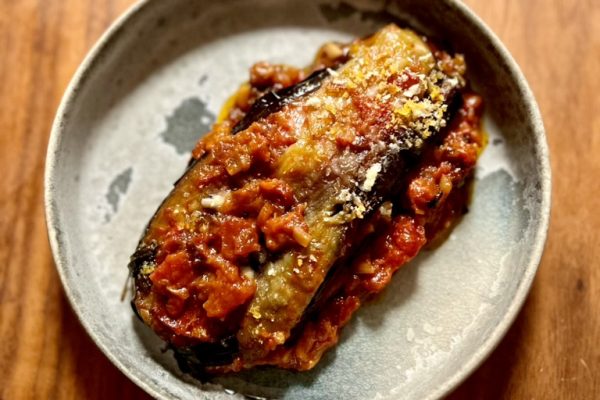

3 thoughts on “Arroz meloso con camarones y sepia”